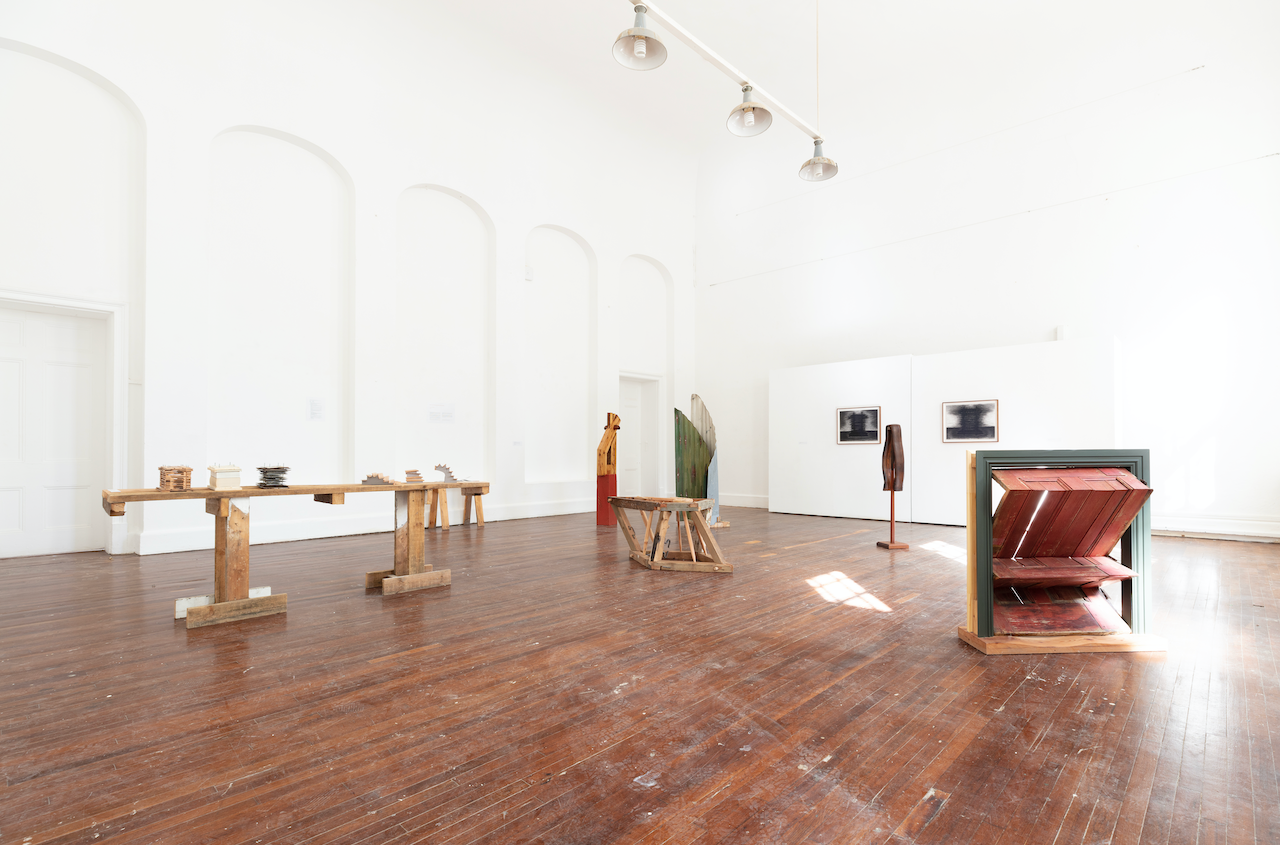
apart from the wood there were people
In 2022 I completed a Postgraduate Diploma in Fine Art at the Michaelis School of Fine Art, University of Cape Town. This is the body of work I produced.
I see in the built environment the contest of successive generations, sometimes quiet and incremental, sometimes violent. Materials and built forms bear the marks of the past, layered with personal and communal aspirations and disappointments. Remaking and decay add new layers, but earlier narratives persist in re-used forms and plastered-over timbers. The institutions within mirror this dynamic: both buildings and institutions resist change, held in place by embedded narratives.
I would like to reimagine those narratives. Nomusa Makhubu argues in her 2020 essay “On Apartheid Ruins” in Third Text that “the enduring histories embodied in buildings, names and institutional traditions are experienced as monumental violation and as insult and humiliation. The ‘rot’ and ‘decay’ may not be manifest on actual edifices, but it consumes certain bodies, ferments race and gender social relations, and decays the sense of belonging”. She centers art in the critical examination of the built environment, and the alternative futures it could hold.
The unknown complicates this critical examination, obscuring commonalities behind uncertainty. But rather than decaying into prejudice, uncertainty could as well be an opportunity for engagement. Nnamdi Elleh, in “Décolonisation, Monuments, and a New Architectural Language” in Falling Monuments, Reluctant Ruins: the persistence of the past in the architecture of apartheid proposes a “conceptual vocabulary for conveying unknowns,” new artistic and architectural languages suited to our time. At best, these languages will hold complexity and ambiguity, communicating the unknown across differences.
My sculpture looks for points of reference and empathy in a language of reimagined building forms and materials. Using salvaged wood and metal and the techniques of carpentry and joinery I hope to engage the conflicting narratives contained in domestic and public structures. These narratives are often unsettling, confronting us with the unknown. But if we can look on the unknown with empathy perhaps we can find shared references and new narratives.
The title of this body of work paraphrases a line from The Beautyful Ones Are Not Yet Born by Ayi Kwei Armah, set in Ghana in the 1960s: “Apart from the wood itself there were, of course, people themselves, just so many hands and fingers bringing help to the wood in its course toward putrefaction”. Using decaying objects as metaphors, Armah’s language contains both hope and despair, empathizing with his characters as they struggle against personal and institutional decay. These narratives of decay are unsettling, confronting us with the unknown. But if we can look on the unknown with empathy perhaps we can find shared references and new narratives.
Photographs on this page by Mia Thom

